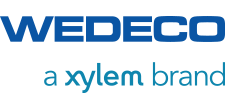It looks like you are coming from United States, but the current site you have selected to visit is Kazakhstan. Do you want to change site?
- Sign In
- Register
- Отправить запрос
- Контакты
-
Enable high contrast mode
-
- Select language
- Algeria
- Angola
- Anguilla
- Antigua and Barbuda
- Argentina
- Australia
- Austria
- Azerbaijan
- Bahamas
- Bahrain
- Barbados
- Belgium
- Belize
- Benin
- Bermuda
- Bolivia
- Botswana
- Brazil
- British Virgin Islands
- Bulgaria
- Burkina Faso
- Burundi
- Cabo Verde
- Cameroon
- Canada English
- Canada Français
- Cayman Islands
- Central African Republic
- Chad
- Chile
- China
- Colombia
- Comoros
- Congo
- Congo, Republic of the
- Costa Rica
- Cote d'Ivoire
- Croatia
- Czech Republic
- Denmark
- Djibouti
- Dominican Republic
- Dominicana
- Ecuador
- Egypt
- El Salvador
- Equatorial Guinea
- Eritrea
- Eswatini
- Ethiopia
- Europe
- Finland
- France
- Gabon
- Gambia
- Germany
- Ghana
- Greece
- Grenada
- Guadeloupe
- Guatemala
- Guinea
- Guinea-Bissau
- Guyana
- Haiti
- Honduras
- Hong Kong
- Hungary
- India
- Indonesia
- Iraq
- Ireland
- Israel
- Italy
- Jamaica
- Japan
- Jordan
- Kazakhstan
- Kenya
- Korea
- Kuwait
- Lebanon
- Lesotho
- Liberia
- Libya
- Lithuania
- Madagascar
- Malawi
- Malaysia
- Mali
- Martinique
- Mauritania
- Mauritius
- Mexico
- Mongolia
- Montserrat
- Morocco
- Mozambique
- Namibia
- Netherlands
- New Zealand
- Nicaragua
- Niger
- Nigeria
- Norway
- Oman
- Panama
- Paraguay
- Peru
- Philippines
- Poland
- Portugal
- Puerto Rico
- Qatar
- Romania
- Rwanda
- Saint Kitts and Nevis
- Saint Lucia
- Saint Vincent and the Grenadines
- Sao Tome and Principe
- Saudi Arabia
- Senegal
- Seychelles
- Sierra Leone
- Singapore
- Slovakia
- Somalia
- South Africa and Sub-Saharan Africa
- South Sudan
- Spain
- Sudan
- Sweden
- Taiwan
- Tanzania
- Thailand
- Togo
- Trinidad and Tobago
- Tunisia
- Turkey
- U.A.E
- U.S. Virgin Islands
- Uganda
- Ukraine
- United Kingdom
- United States
- Uruguay
- Uzbekistan
- Venezuela
- Vietnam
- Yemen
- Zambia
- Zimbabwe
Удаление загрязнений

Water and wastewater contaminants – the list keeps growing
As the list of contaminants grows and limits become more restrictive, the treatment of water and wastewater becomes more complex. Metals, volatile organic compounds, nutrients, toxicity, pesticides, viruses, bacteria, taste and odor constituents – the list goes on and on. The list of not-yet-regulated contaminants of emerging concern (CEC), such as pharmaceuticals and personal care products, is also growing, complicating projections of future needs.
Today more than ever, every drop counts. Population expansion and industrialization continue to increase the demand for safe, potable water for human needs, agriculture, business and industry, straining fresh water supplies and increasing wastewater production. Many governments, utilities and industries are looking to seawater or wastewater reuse to help meet demand, adding even more contaminants to the treatment removal list.
Whether for potable use, industrial use, domestic or industrial wastewater treatment, or reuse, understanding the contaminants is critical to determining the best treatment. The need for cost effective and energy efficient water and wastewater treatment has never been greater or more complex.

Надежные и экологичные решения для обработки обычных и сточных вод.
Запрос информации
All fields required.
Looks like you are offline, your form will be sent as soon as you get back online.
О компании Ксилем (Xylem)
- Политика конфиденциальности
- Условия и положения
- Изменить настройки рассылки
- Copyright 2025 Xylem. Все права защищены.

